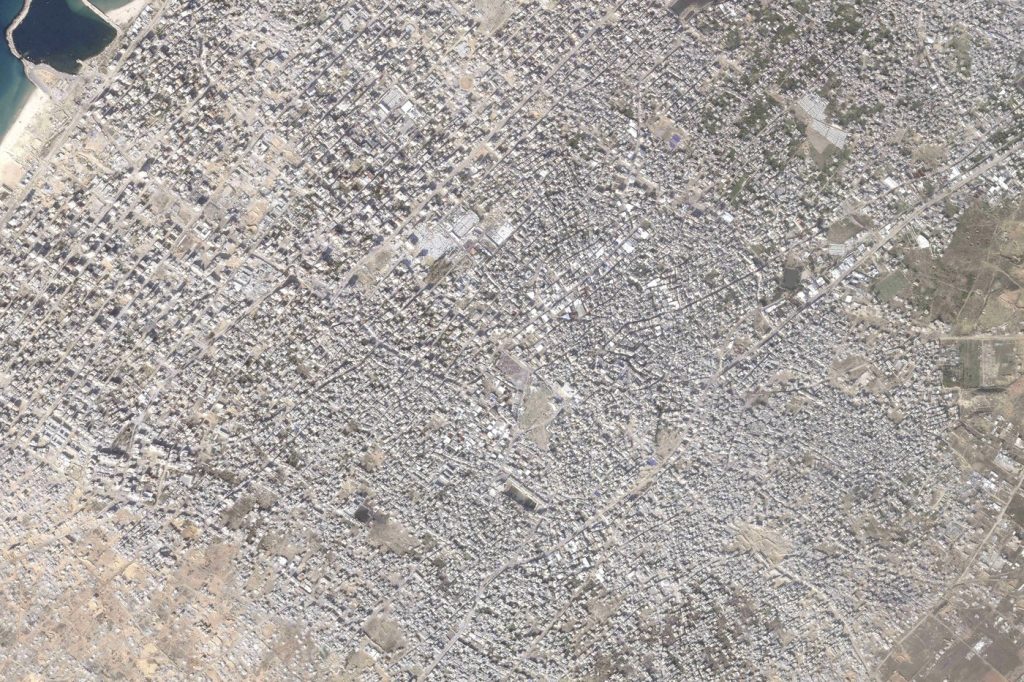DUBAI, United Arab Emirates (AP) — The ongoing Israel-Hamas war has had catastrophic consequences for the Gaza Strip, a region that has faced severe devastation. As the conflict approaches a potential ceasefire, satellite imagery provides valuable insights into the extensive destruction within Gaza, which remains largely inaccessible to journalists and international observers.
Among the satellite images are depictions of a proposed buffer zone by Israel, which would encompass approximately 60 square kilometers (23 square miles) of land from the Gaza Strip. This territory totals about 360 square kilometers (139 square miles), and Palestinians envision it as part of a future state, alongside the West Bank and East Jerusalem. Such aspirations encounter resistance from Israel, which continues to assert its territorial claims.
The impact of the war is particularly evident in Gaza City, the primary urban center in the region, which has been profoundly affected. Images reveal widespread destruction with numerous buildings reduced to rubble and streets heavily littered with debris. As the conflict advanced, Israel instructed civilians to evacuate further south, leading to significant demographic shifts observable in areas like Muwasi, located just north of the Gaza Strip's southern boundary with Egypt. Satellite pictures show this once rural area transformed into a makeshift settlement, wherein countless tents have arisen along the sandy coastline and surrounding agricultural lands.
Researchers have utilized these satellite images to aid humanitarian agencies and experts in assessing the scale of destruction. Corey Scher from City University of New York and Jamon Van Den Hoek from Oregon State University have been monitoring the situation in Gaza since Hamas initiated hostilities on October 7, 2023, resulting in the deaths of 1,200 people and the abduction of 250 individuals by Hamas. Their latest findings, published recently, estimate that approximately 59.8% of all buildings in Gaza have suffered damage due to the conflict.
This assessment represents a slight decrease compared to a previous analysis conducted by the United Nations Satellite Center, which suggested that around 66% of structures in Gaza had been affected. As the war continues, local health authorities report a death toll exceeding 46,000 people, highlighting the ongoing humanitarian crisis exacerbated by the sustained violence and destruction.
For a comprehensive understanding of the evolving situation, interested individuals can follow ongoing coverage of the conflict through the Associated Press.
Jon Gambrell, The Associated Press










